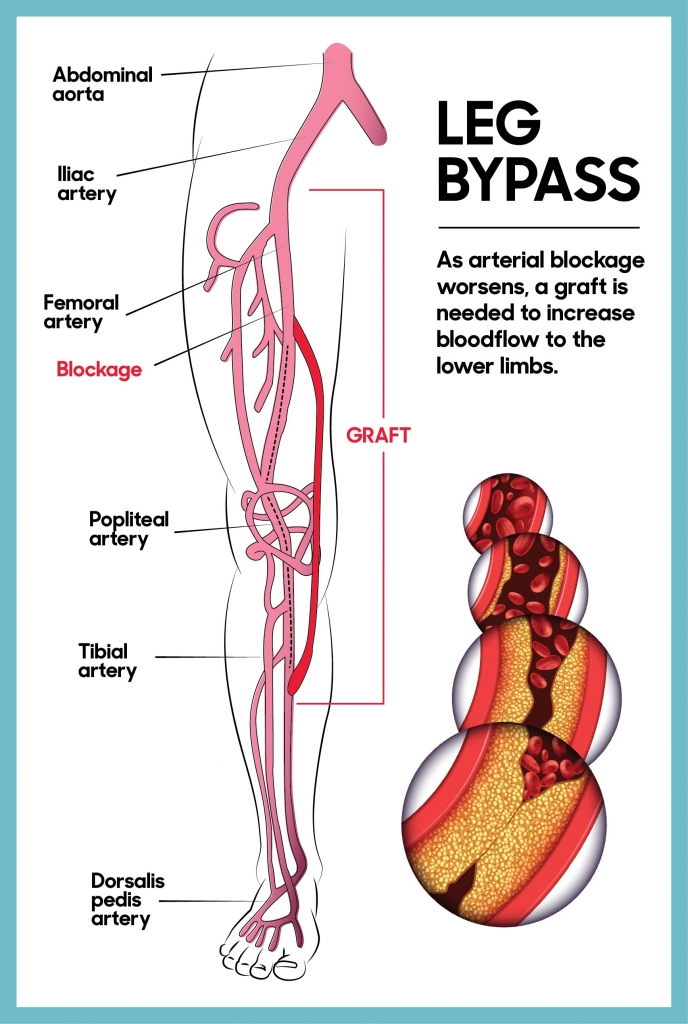If the first thing that comes to mind when you hear the word bypass is a road bypassing a city to avoid congestion, then you’re well on your way to understanding leg bypass surgery.
Leg bypass surgery, also known as lower extremity bypass surgery, is a type of vascular bypass surgery. The term vascular means it’s related to blood vessels and with this type of surgical procedure, blood is redirected from one area to another by rerouting blood vessels to avoid a blockage. Other types of vascular bypass surgery include coronary artery bypass surgery, where the goal is to restore normal blood flow to the heart, and cerebral artery bypass surgery, when surgeons restore blood flow to part of the brain.
Who needs leg bypass surgery?
The most common reason someone would need leg bypass surgery is due to peripheral artery disease (PAD), which is when narrowed arteries restrict blood flow to certain areas. The most common cause of PAD is atherosclerosis, where a buildup of plaque causes the blood vessels to narrow and stiffen, but narrowed arteries can also be caused by inflammation, injury, unusual anatomy, or radiation exposure. PAD can be asymptomatic, or it can cause issues like leg pain, numbness, and ulcers, among other things. The most common symptom of PAD is calf pain.
Someone might need leg bypass surgery when they aren’t candidates for minimally invasive surgeries like balloon angioplasty — where a tiny tube is inserted in the artery, and a balloon is inflated that compresses the buildup, improving flow — or stent placement — where a tiny metal mesh device is placed to keep the artery open, or if one of those other options fails.

What happens during leg bypass surgery?
Leg bypass surgeries are complex procedures that can take up to four or five hours. Not every hospital is able to perform these surgeries as they’re technically demanding, and the vessels are small, requiring a magnifying glass to complete the procedure. The Ottawa Hospital does more of these intricate procedures than any other hospital in Ontario. During the procedure, the surgeons will graft either one of the patient’s own veins or a synthetic graft around the blocked artery, above and below the obstruction, to create a new route for blood flow.
The Ottawa Hospital is uniquely equipped to perform leg bypass surgeries — and support patients in their recovery — with a highly-skilled team of experts in vascular surgery and in our Limb Preservation Clinic.
What happens after leg bypass surgery?
After undergoing this surgery, patients typically stay in the hospital for a few days, and it will take around two to three weeks for the wound to heal. More than 90% of leg bypass surgeries are immediately successful, and 60-70% will last five years or more. Between a quarter and a third of leg bypass surgery patients will require further procedures on their grafts.
The success of leg bypass surgery and recovery can vary, but a patient’s overall health plays a big role in preventing further atherosclerosis and PAD. Some healthy lifestyle changes that can treat or prevent both conditions include quitting smoking, eating well, exercising regularly, and maintaining a healthy weight. If you are considering this surgery, please talk to your doctor about how to improve your chances for success.




